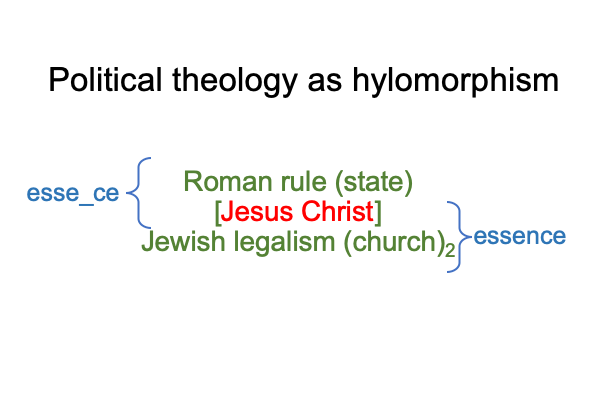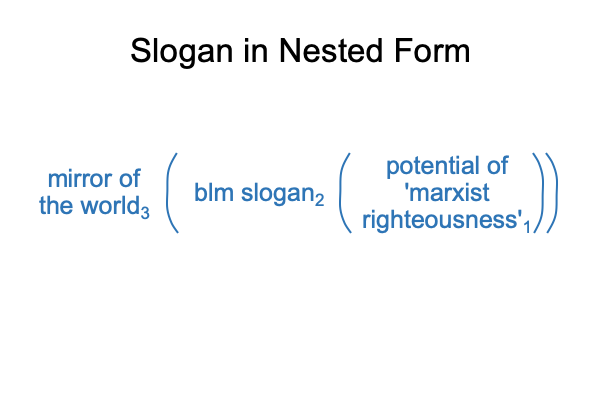Comments on Fr. Dwight Longenecker’s Podcast (2020) “Myths, Monsters and Mysteries” (Part 9)
0082 Longenecker introduces a podcast entitled “Myths, Monsters and Mysteries”. My guess is that he intends to proceed through these three topics using insights from Jungian psychology. This is good, but not complete.
Jungian psychology addresses essence. Longenecker may argue that if the essence is convincing, in terms of patterns of the human psyche, then esse_ce needs not be actual. He may argue this even though his previous independent research locates the magi, not as Persians, but as traders living between Persia and Israel.
0083 Myth has a hylomorphic structure, requiring attention to both esse_ce and essence. Without substance, the myth becomes a fantasy (pure essence) as opposed to a historical documentary (pure esse_ce).
0084 The doctrine of original sin rests on the esse_ce and essence of the Genesis stories of Adam and Eve, even though they are fairy tales.
Augustine paints Adam and Eve as the first humans.
The hypothesis of the first singularity pictures Adam and Eve as fairy tale figures that encapsulate the theodramatic appearance of the Ubaid culture. Speech-alone talk is realized and sets the Ubaid on an irreversible course towards unconstrained social complexity.
0085 In terms of mystery, a single actuality forms out of two. The Lebenswelt that we evolved in intersects with our current Lebenswelt.

0086 This intersection depicts the first singularity. Adam and Eve stand at this intersection. So does the esse_ce and essence of the doctrine of original sin.
The myth Adam and Eve is a fairy tale. As such, the metaphor of grain of sand [hides within and gives rise to] a pearlapplies. The oyster is the human mind. The oyster is also our world of unconstrained social complexity.
0087 In sum, the stories of Adam and Eve bring us to the beginning of our current Lebenswelt.
Ours is a world of mysteries.
Ours is a world of monsters.
Ours is a world of myths.
0088 A grain of sand hides within and gives rise to a pearl.

00892 The myth of Adam and Eve sets the stage for the two monsters that Jesus brings into one. Roman rule2 is all about state power. State power maintains order1. Jewish legalism2 is all about the routinization of righteousness1. Legalities2confer righteousness in the eyes of God1.
Jesus Christ stands as the single actuality2 containing Roman rule2 and Jewish legalism2. This intersection serves as the starting point for all political theology. In Roman rule2, the state does not serve the people. In Christian political theology, it does. In Jewish legalism, the deed does not stand for the intention1. In Christian ethics, it does.
Jesus is the one who tames the two monsters of state and church. One without the other leads to catastrophe. Both without Jesus leads to devastating conflict.
0090 In sum, political theology transforms one of the mysteries of Jesus Christ into a hylomorphism, a thing to be discussed and explored.
Here is a picture.

0091 Myths are like pearls, expressing both esse_ce (being as existent) and essence.
Myths offer monsters to perceive.
Our perception of monsters allows us to appreciate imbalances between esse_ce and essence.
0075 The most horrifying monsters are articulated in the modern era. They are existence0 (esse_ce without substance) and form0 (essence without substance).
They are not confined to the modern era. Indeed, they have been here since the beginning. They include Roman rule2and Jewish legalism2.
The life and passion of Jesus Christ takes on the characteristics of myth. Jesus brings two historic monsters into a single actuality. Jesus both contains and transcends these monsters. Jesus serves as their intersection. All roads lead through Christ.
Political theology brings this mystery back into Aristotle’s hylomorphism. The mystery becomes a field of inquiry. That inquiry is called, “political theology”.
0076 This concludes my comments on Fr. Dwight Longnecker’s Podcast (2020) on myths, monsters and mysteries.The progression from myths to monsters to mysteries constitutes a profound insight that inspires these comments. My gratitude for Fr. Longnecker’s intiative.












